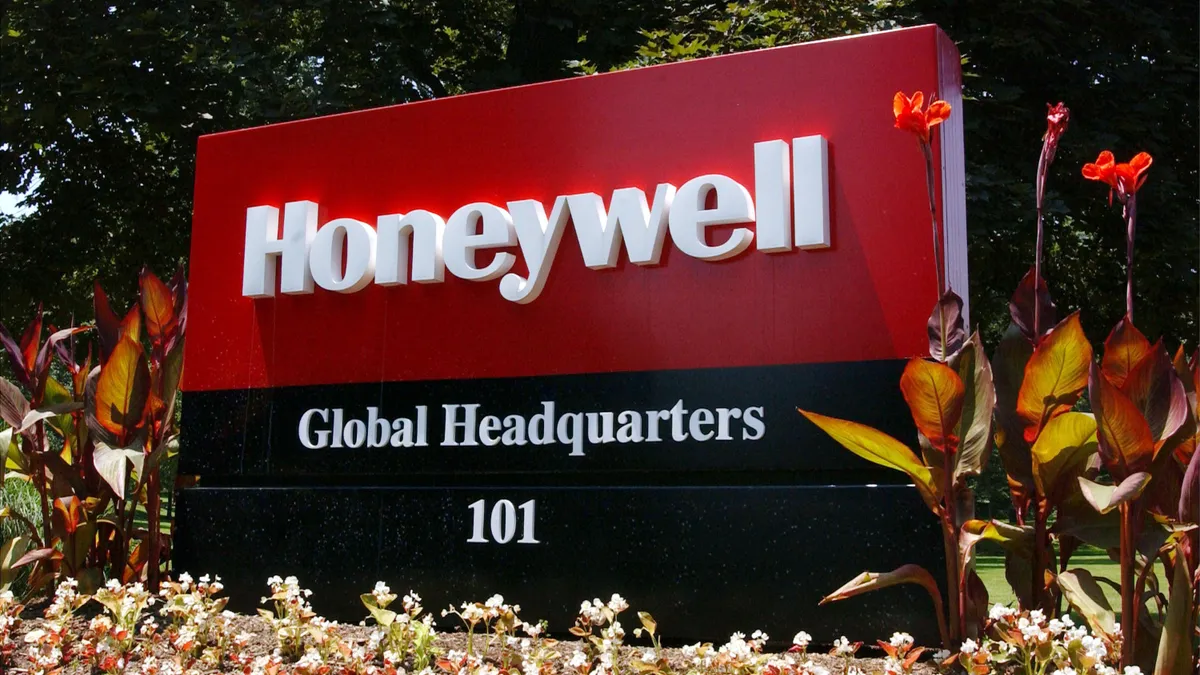Dive Brief:
-
Global technology conglomerate Honeywell is looking to beef up its warehouse automation business as analysts predict a recovery in the market.
-
Industry analysts expect warehouse automation sales to pick up this year after a slowdown in 2022 and 2023. Trends that are favorable to the market include rising e-commerce shipments and ongoing labor shortages, according to Kevin Graebel, chief product and marketing officer at Honeywell’s Intelligrated unit.
-
“A really high percentage of warehouse operators are struggling to find enough people to do their work, and so there will continue to be this need for automation to help them,” he said in an interview.
Dive Insight:
Honeywell operates through multiple segments, including industrial automation. Meeting automation needs, including in the warehouse context, is a “really critical” part of the Charlotte, North Carolina-based company’s growth strategy, Graebel said.
Honeywell’s Intelligrated unit, which focuses on warehouse automation, is looking to beef up its portfolio of services through a partnership with Chinese startup Hai Robotics. The alliance, announced late last month, combines Hai’s robotics technology with Honeywell’s Momentum warehouse management software suite, according to a press release. Financial terms of the deal weren’t disclosed.
“Companies face high costs for warehouse space, continued labor shortages and pressure to deliver goods quickly,” Honeywell Intelligrated President Keith Fisher said in the release. “This automated solution allows them to maximize space in their existing facilities, increase productivity and best use their workforce.”
The demand for warehouse automation rose after the pandemic as e-commerce accelerated and increased the need for warehousing space, particularly in industries such as retail, manufacturing, logistics and parcel delivery.
However, demand dipped in 2022 for end-to-end warehouse automation technologies other than robots in response to excess capacity built during the pandemic, the decline in e-commerce rates and the overall slowdown in the global economy, according to market research firm Interact Analysis.
Industry revenues reached $36.4 billion in 2021, a 30% increase compared with the prior year, according to the research firm. The growth rate then decelerated to 16.6% in 2022. The downward trend continued in the subsequent year.
“We think we are at rock bottom right now and can only go up from here,” Rueben Scriven, a research manager at U.K.-based Interact Analysis, told CFO Dive last summer.
Despite the overall slump, major warehouse operators such as Amazon have continued to invest heavily in technology as they manage labor challenges and high e-commerce volumes.
In October, Amazon announced a plan to begin testing a two-legged robot dubbed Digit for use in its warehouse operations. The robot was developed by Corvallis, Oregon-based Agility Robotics, one of the companies Amazon invested in through its $1 billion Industrial Innovation Fund as part of a decades-long push to invest in “next-generation technology” for its operations.













